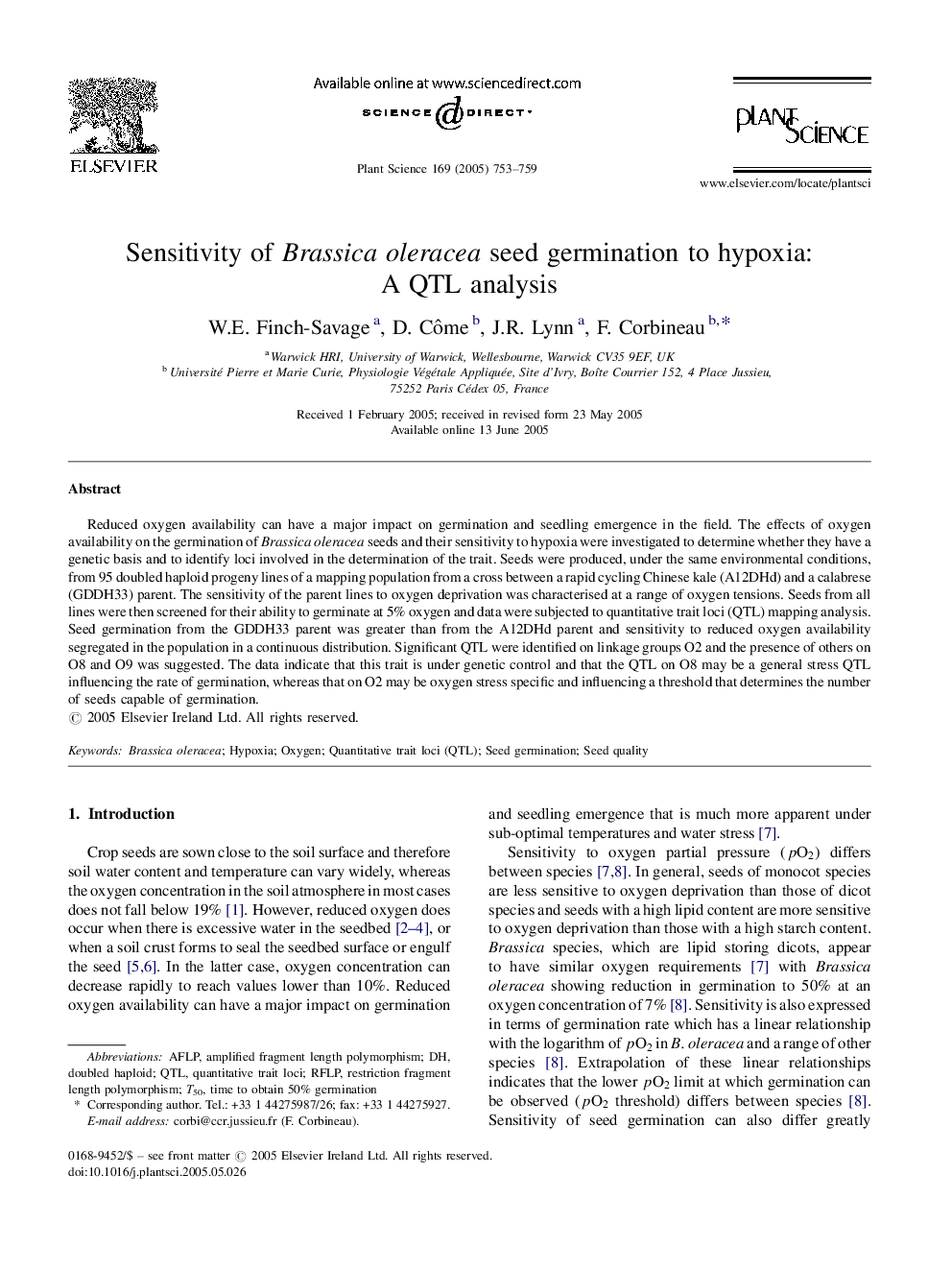| Article ID | Journal | Published Year | Pages | File Type |
|---|---|---|---|---|
| 10841842 | Plant Science | 2005 | 7 Pages |
Abstract
Reduced oxygen availability can have a major impact on germination and seedling emergence in the field. The effects of oxygen availability on the germination of Brassica oleracea seeds and their sensitivity to hypoxia were investigated to determine whether they have a genetic basis and to identify loci involved in the determination of the trait. Seeds were produced, under the same environmental conditions, from 95 doubled haploid progeny lines of a mapping population from a cross between a rapid cycling Chinese kale (A12DHd) and a calabrese (GDDH33) parent. The sensitivity of the parent lines to oxygen deprivation was characterised at a range of oxygen tensions. Seeds from all lines were then screened for their ability to germinate at 5% oxygen and data were subjected to quantitative trait loci (QTL) mapping analysis. Seed germination from the GDDH33 parent was greater than from the A12DHd parent and sensitivity to reduced oxygen availability segregated in the population in a continuous distribution. Significant QTL were identified on linkage groups O2 and the presence of others on O8 and O9 was suggested. The data indicate that this trait is under genetic control and that the QTL on O8 may be a general stress QTL influencing the rate of germination, whereas that on O2 may be oxygen stress specific and influencing a threshold that determines the number of seeds capable of germination.
Keywords
Related Topics
Life Sciences
Agricultural and Biological Sciences
Plant Science
Authors
W.E. Finch-Savage, D. Côme, J.R. Lynn, F. Corbineau,
